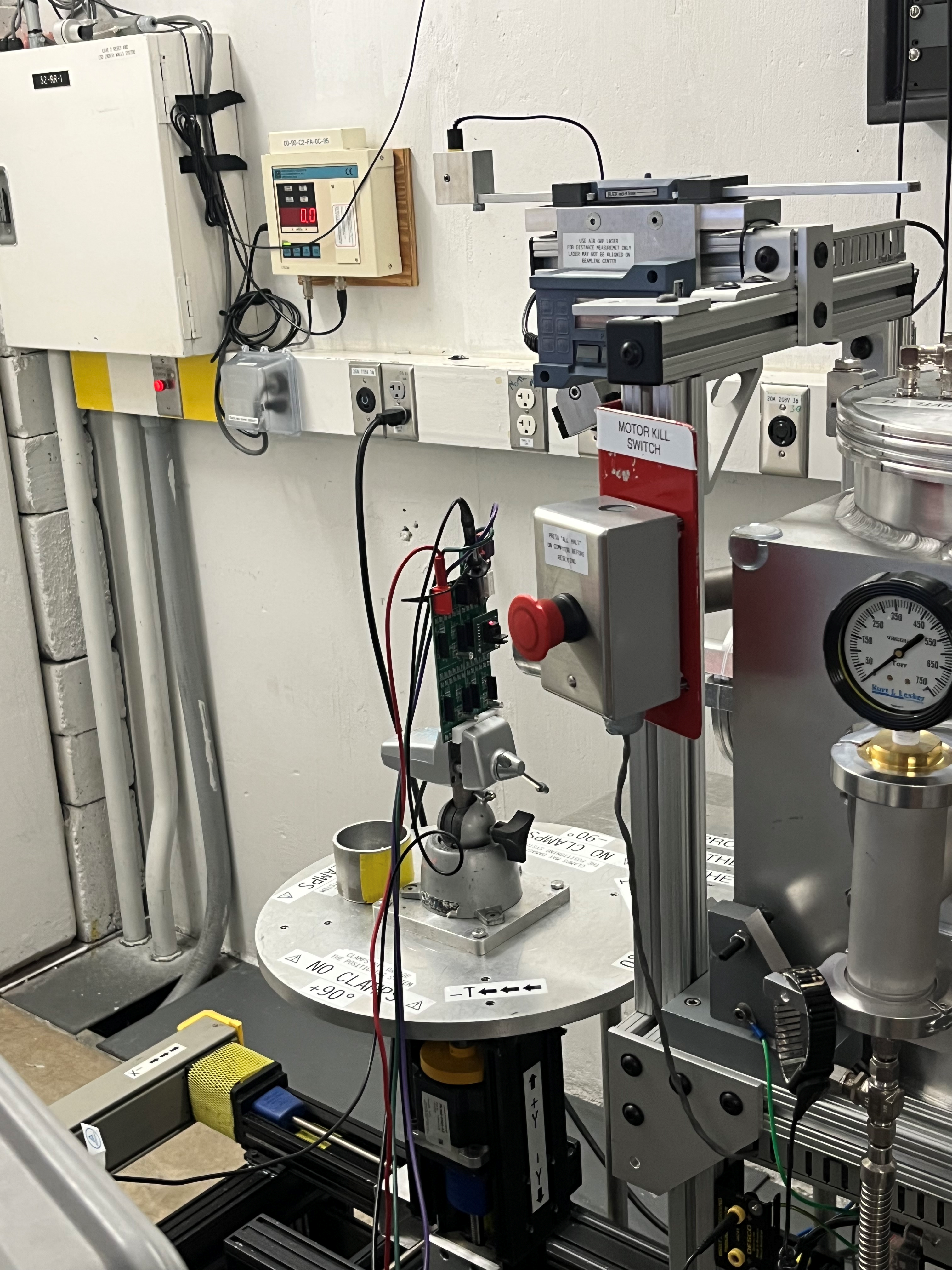SBOK092 December 2024 OPA4H199-SP
- 1
- 2
- Trademarks
- 1 Introduction
- 2 Single-Event Effects (SEE)
- 3 Device and Test Board Information
- 4 Irradiation Facility and Setup
- 5 Depth, Range, and LETEFF Calculation
- 6 Test Setup and Procedures
- 7 Destructive Single-Event Effects (DSEE)
- 8 Single-Event Transients (SET)
- 9 Event Rate Calculations
- 10Summary
- A Total Ionizing Dose from SEE Experiments
- B References
4 Irradiation Facility and Setup
The heavy-ion species used for the SEE studies on this product were provided and delivered by the TAMU Cyclotron Radiation Effects Facility using a superconducting cyclotron and an advanced electron cyclotron resonance (ECR) ion source. At the fluxes used, ion beams had good flux stability and high irradiation uniformity over a 1in diameter circular cross-sectional area for the in-air station. Uniformity is achieved by magnetic defocusing. The flux of the beam is regulated over a broad range spanning several orders of magnitude. For the bulk of these studies , ion flux between 104 to 105 ions/cm2·s were used to provide heavy-ion fluences of 106 to 107 ions/cm2.
For these experiments Praseodymium (141Pr), Silver (109Ag), Krypton (84Kr), Copper (63Cu), Argon (40Ar), and Neon (20Ne) were used. The angle was held to 0°, but different distances between the device and beam were used to increment the LETEFF. The 141Pr, 109Ag, 84Kr,63Cu 40Ar, and 20Ne ions used had a total kinetic energy of 2114MeV, 1634MeV, 1259MeV, 944MeV, 599MeV, and 300MeV in the vacuum, (15MeV/amu line) respectively. Ion beam uniformity for all tests was in the range of 92 to 97%.
Figure 4-1 shows the OPA4H199 device under test (DUT) in the AMP-PDK-EVM used for data collection at the TAMU facility. Although not visible in this photo, the beam port has a 1mil Aramica window to allow in-air testing while maintaining the vacuum within the accelerator with only minor ion energy loss.
 Figure 4-1 Photograph of the OPA4H199-SP
EVM in Front of the Heavy-Ion Beam Exit Port at the Texas A&M
Cyclotron
Figure 4-1 Photograph of the OPA4H199-SP
EVM in Front of the Heavy-Ion Beam Exit Port at the Texas A&M
Cyclotron